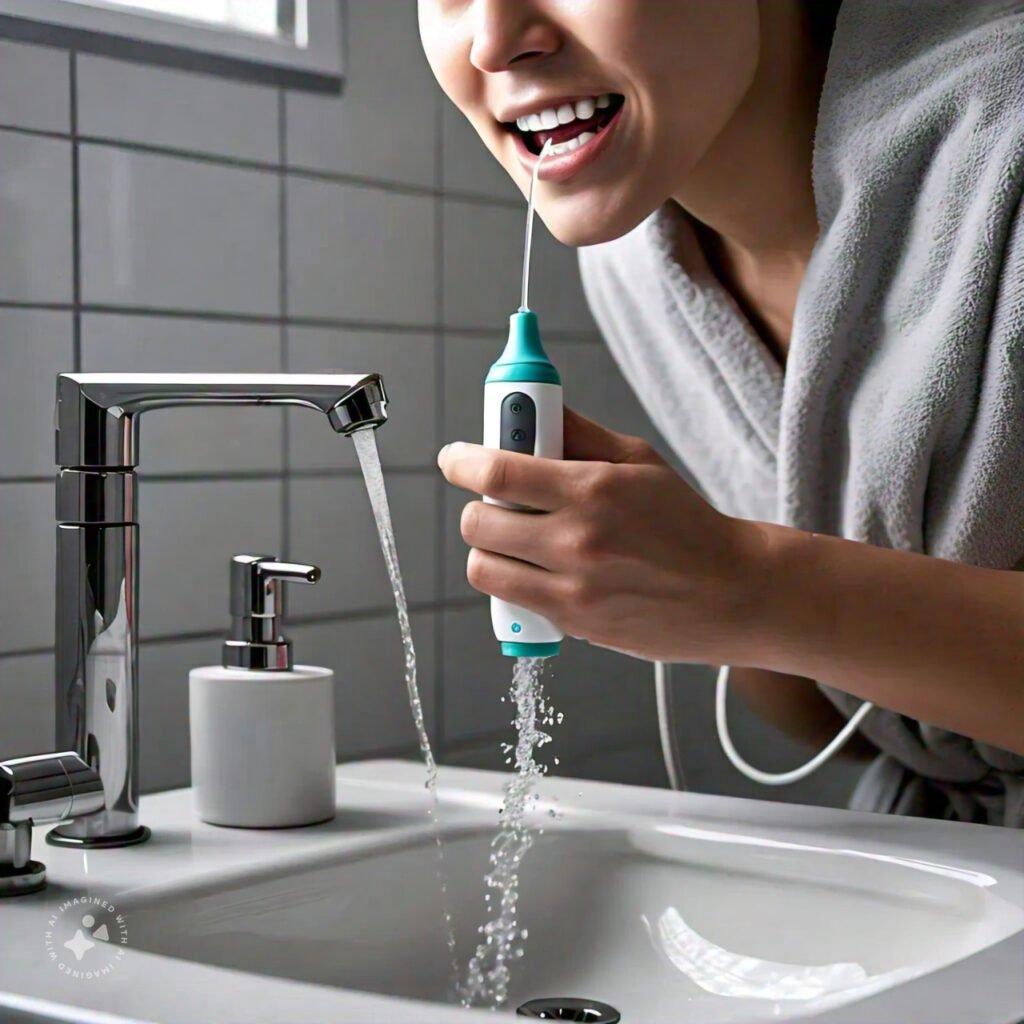
Dental Flosser and Water Flosser
These are two popular things for removing plaque and food particles from teeth and gums. While both are effective, they have distinct differences.
Dental flossing, a traditional method, uses a thread-like material to physically remove plaque and debris between teeth and below the gumline. It’s low-cost, portable, and widely available. However, flossing requires technique and skill, can be time-consuming, and may cause bleeding or discomfort, especially for those with tightly spaced teeth or limited dexterity.
Water flossing, on the other hand, uses a pressurized water stream to remove plaque and bacteria. It’s easy to use, effective for complex dental work, and reduces bleeding and discomfort. Water flossing also improves gum health and is recommended for patients with periodontal pockets or implants. However, it’s higher in cost, requires electricity or batteries, and may be noisy.
When choosing between dental flossing and water flossing, consider your dental needs and preferences. If you have simple dental anatomy and prefer a low-cost option, flossing might be suitable. However, if you have complex dental work, limited dexterity, or seek enhanced gum health, water flossing is a better choice.
Ultimately, both methods are accepted by the American Dental Association (ADA) for interdental cleaning. Consult your dentist for personalized recommendations and combine either method with regular brushing and dental check-ups for optimal oral health.
Additional Tips:
- Floss daily, preferably before brushing
- Adjust water flosser pressure for comfort
- Aim water flosser at 90-degree angle
- Use fluoride mouthwash after flossing or water flossing
Recommended for:
- Dental flossing: Simple dental anatomy, low-cost preference, good manual dexterity
- Water flossing: Complex dental work, limited dexterity, enhanced gum health
Consult your dentist for personalized advice.
Below is the best selling water flosser available in Amazon
Your purchases support us! We’re Amazon Associates, earning commissions without adding to your bill. Here’s how it works.
- Price: Around $50-$70
- Features:
- 5 adjustable pressure settings
- 360° rotating nozzle
- 300ml water tank
- USB rechargeable
- Compact design
- Pros:
- Easy to use and clean
- Effective plaque removal
- Affordable
- Cons:
- Limited battery life (5-7 days)
- No travel case
MySmile Cordless Water Flosser
- Price: Around $40-$60
- Features:
- 3 adjustable pressure settings
- 360° rotating nozzle
- 250ml water tank
- USB rechargeable
- IPX7 waterproof design
- Pros:
- Portable and lightweight
- Easy to maneuver
- Good battery life (7-10 days)
- Cons:
- Less powerful than Voom
- Smaller water tank
Comparison Verdict:
Both water flossers are effective and easy to use. However, the Voom Water Flosser has:
- More adjustable pressure settings (5 vs 3)
- Larger water tank (300ml vs 250ml)
- More compact design
On the other hand, the MySmile Cordless Water Flosser has:
- Longer battery life (7-10 days vs 5-7 days)
- IPX7 waterproof design
- More affordable price point
Recommendation:
Choose Voom Water Flosser if:
- You prioritize more pressure settings and a larger water tank
- You prefer a compact design
Choose MySmile Cordless Water Flosser if:
- You prioritize portability and battery life
- You’re on a budget
Rating:
Voom Water Flosser: 4.5/5
MySmile Cordless Water Flosser: 4.2/5
Note: Prices may vary depending on the retailer and location.
I hope this comparison review helps you make an informed decision!
Flossing is a crucial aspect of oral hygiene that plays a vital role in maintaining healthy teeth and gums. By removing food particles, plaque, and bacteria from between teeth and under the gumline, flossing prevents gingivitis and gum disease, reduces the risk of tooth decay, and helps prevent bad breath. Regular flossing also prevents tartar buildup, boosts oral health, and enhances overall well-being. Furthermore, research suggests that flossing may even help prevent systemic diseases, such as heart disease and diabetes, by reducing inflammation and bacteria in the mouth.
Neglecting to floss can lead to severe consequences, including gingivitis, tooth decay, and loose teeth. Additionally, poor oral health has been linked to various health issues, including respiratory infections, and even cognitive decline. To reap the benefits of flossing, incorporate it into your daily routine, ideally before brushing. Don’t forget to rinse with water or mouthwash and schedule regular dental check-ups.
Amazon Items Featured in This Article
Your purchases support us! We’re Amazon Associates, earning commissions without adding to your bill. Here’s how it works.
Related Articles:
